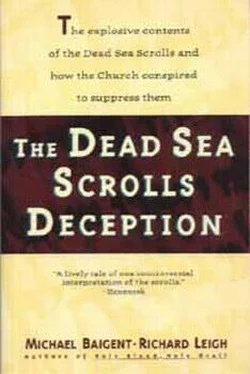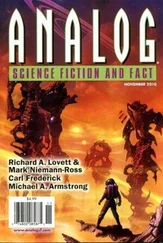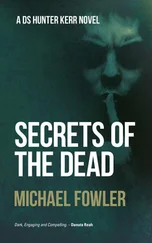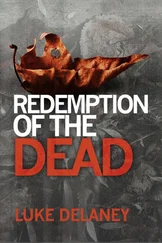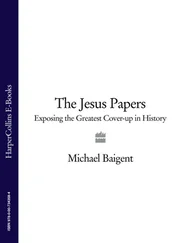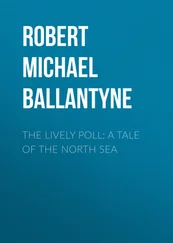Towards the end of the 19th century, the revival of interest in esoteric thought consolidated the association of Christianity with the Essenes. Theosophy, through the teachings of H.P. Blavatsky, postulated Jesus as a magus or adept who embodied elements of both Essene and Gnostic tradition. One of Blavatsky’s disciples, Anna Kingsford, developed a concept of ‘esoteric Christianity’. This roped in alchemy as well and portrayed Jesus as a Gnostic thaumaturge who, prior to his public mission, had lived and studied with the Essenes. In 1889, such ideas were transplanted to the Continent through a book called The Great Initiate, by the French theosophist Edouard Schure. The mystique surrounding the Essenes had by now begun to associate them with healing, to credit them with special medical training and to represent them as a Judaic equivalent of the Greek Therapeutae. Another influential work, The Crucifixion by an Eye-Witness, which appeared in German towards the end of the 19th century and in English around 1907, purported to be a genuine ancient text composed by an Essene scribe. Jesus was depicted as the son of Mary and an unnamed Essene teacher, whose fund of secret Essene medical knowledge enabled him not just to survive the Crucifixion, but also to appear to his disciples afterwards as if ‘risen from the dead’. George Moore undoubtedly drew on this work when, in 1916, he published The Brook Kerith and scandalised Christian readers across the English-speaking world. Moore, too, portrayed Jesus as a protégé of Essene thought, who survives the Crucifixion and retires to an Essene community in the general vicinity of Qumran. Here, years later, he is visited by a fanatic named Paul, who, quite unknowingly, has come to promulgate a bizarre mythologised account of his career and, in the process, promote him to godhood.
The Essenes depicted in The Brook Kerith derive ultimately from the ‘stereotyped’ Essenes of Pliny, Josephus and Philo, imbued now with a mystical character which endeared them to esoteric-oriented writers of the late 19th and early 20th centuries. To the extent that educated readers knew anything of the Essenes at all, this was the prevailing image of them. And something of this image was retained even by more critical commentators, such as Robert Graves, who in other respects sought to demystify Christian origins.
When the Dead Sea Scrolls came to light, they seemed, on the surface at least, not to contain anything that conflicted with the prevailing image of the Essenes. It was only natural, therefore, that they should be associated with the established conceptions.
As early as 1947, when he first saw the Qumran texts, Professor Sukenik had suggested an Essene character for their authorship. Father de Vaux and his team also invoked the traditional image of the Essenes. As we have noted, de Vaux was quick to identify Qumran with the Essene settlement mentioned by Pliny. ‘The community at Qumran’, Professor Cross concurred, ‘was an Essene settlement.’ 10It soon became regarded as an established and accepted fact that the Dead Sea Scrolls were essentially Essene in their authorship, and that the Essenes were of the familiar kind — pacifist, ascetic, celibate, divorced from public and particularly political issues.
The community at Qumran, the consensus view contends, built upon the much earlier remains of an abandoned Israelite fortress dating from the 6th century BC. The authors of the scrolls arrived at the site some time around 134 bc, and the major buildings were erected around 100 bc and thereafter — a chronology safely and uncontroversially pre-Christian. The community was said to have thrived until it was decimated by an earthquake, followed by a fire, in 31 bc. During the reign of Herod the Great (37-4 bc), Qumran was abandoned and deserted, and then, in the reign of Herod’s successor, the ruins were reoccupied and rebuilding undertaken. According to the consensus, Qumran then flourished as a quietist, politically neutral and disengaged enclave until it was destroyed by the Romans in ad 68, during the war that also involved the sack of Jerusalem. After this the site was occupied by a Roman military garrison until the end of the 1st century. When Palestine rose in revolt again between ad 132 and 135, Qumran was inhabited by rebel ‘squatters’. 11It was a neat, conveniently formulated scenario which effectively defused the Dead Sea Scrolls of whatever explosive potential they might have. But the evidence seems to have been ignored when expediency and the stability of Christian theology so dictated.
There is a contradiction, quite apart from the geographical question, in de Vaux’s assertion that the passage from Pliny, quoted here on page 20, refers to Qumran — a contradiction which pertains to the dating of the scrolls. Pliny is referring, in this passage, to the situation after the destruction of Jerusalem. The passage itself indicates that Engedi has likewise been destroyed — which it was. The Essene community, however, is described as still intact, and even taking in a ‘throng of refugees’. Yet even de Vaux acknowledged that Qumran, like Jerusalem and Engedi, was destroyed during the revolt of AD 66-73. It would thus seem even more unlikely that Pliny’s Essene community is in fact Qumran. What is more, Pliny’s community, as he describes it, contains no women, yet there are women’s graves among those at Qumran. It is still, of course, possible that the occupants of Qumran were Essenes, if not of Pliny’s community, then of some other. If so, however, the Dead Sea Scrolls will themselves reveal how ill informed about the Essenes Pliny was.
The term ‘Essene’ is Greek. It occurs only in classical writers — Josephus, Philo and Pliny — and is written in Greek as ‘Essenoi’ or ‘Essaioi’. Thus, if the inhabitants of Qumran were indeed Essenes, one would expect ‘Essene’ to be a Greek translation or transliteration of some original Hebrew or Aramaic word, by which the Qumran community referred to themselves.
Accounts of the Essenes by classical writers are not consistent with the life or thought of the community as revealed by either the external evidence of archaeology or the internal evidence of the texts themselves. Josephus, Philo and Pliny offer portraits of the Essenes which are often utterly irreconcilable with the testimony of Qumran’s ruins and of the Dead Sea Scrolls. The evidence at Qumran, both internal and external, repeatedly contradicts their accounts. Some of these contradictions have been cited before, but it is worth reviewing the most important of them.
1. Josephus acknowledges that there is ‘another order’ of Essenes who do marry, but this, he indicates, is atypical. 12In general, Josephus says, echoing Philo and Pliny, the Essenes are celibate. Yet the graves of women and children have been found among those excavated at Qumran. And the ‘Community Rule’ contains regulations governing marriage and the raising of children.
2. None of the classical writers ever mentions anything to suggest that the Essenes used a special form of calendar. The Qumran community, however, did — a unique, solar-based calendar, rather than the conventional Judaic calendar, which is lunar-based. If the Qumran community were indeed Essenes, surely so strikingly noticeable a characteristic would have been accorded some reference.
3. According to Philo, the Essenes differed from other forms of ancient Judaism in having no cult of animal sacrifices. 13Yet the ‘Temple Scroll’ issues precise instructions for such sacrifices. And the ruins of Qumran revealed animal bones carefully placed in pots, or covered by pots, and buried in the ground under a thin covering of earth. 14De Vaux speculated that these bones might be the remains of ritual meals. They might indeed. But they might equally be the remains of animal sacrifices, as stipulated by the ‘Temple Scroll’.
Читать дальше
